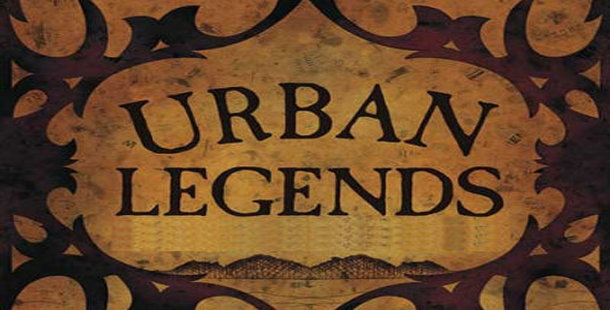In Search of Nineteenth-Century Urban Legends July 28, 2015
Author: Beach Combing | in : Modern , trackback
Urban legends are short stories typically about death, sex or crime, which are told as if they are true. They spread by word of mouth, the newspaper and any other means of communication to hand. The classic modern examples of the urban legends include the vanishing hitchhiker (a minority of urban legends have a supernatural component), the crocodile in the sewer and the mafia neighbours (young couple robbed have their goods returned by a elderly Italian couple down the road). How old are urban legends? Well don’t be put off by the name. Urban legends can be documented in ancient times and the only reason that they cannot be documented in prehistory is because there was no documentation to be had. In other words urban legends are part of the human condition: we are, as this site has never tired of pointing out, storytellers. But this brings us to an embarrassing question: where are the urban legends of the nineteenth-century? Where is the Vanishing Hitchhiker, the sewer crocodile and the mafia neighbours in the 1800s? After all, the nineteenth century was emphatically not prehistory, there was more documentation than in any other period prior to the 1900s and yet most lists of nineteenth-century urban legends are jejune and all too often based on misunderstandings of what urban legends really are.
There are three problems with finding Victorian urban legends: though Beach has decided to call open season on them. First, nineteenth-century sensibilities meant that stories involving sex or nudity were simply not going to appear in any kind of respectable publication and with the fringe exception of erotica there was no other kind. If you want to find Victorian urban legends you will have to look, above all, for crime or death: two subjects that writers of the period spent no end of words upon. Second, nineteenth-century urban legends will not be the same as the legends of today; or at least they won’t necessarily be the same. For example, how can you have a hitchhiker before the motor car? It is likely that there will be equivalent legends, but that they will be expressed in nineteenth-century terms: a cart and a ghostly swain perhaps? (There is a story from St Petersburg…) Expect a staggered and confusing genealogy. Third, even the general public is aware of the existence of urban legends today. This means that most of us are inoculated. We ask ourselves ‘is this true’ when we hear a likely-sounding story. Of course, nineteenth-century men and women also knew that stories could be true or false: but perhaps there was less of an understanding that once made up an urban legend has the reach of a plague virus.
So how do you find nineteenth-century urban legends. Here are some initial thoughts. (i) Be aware that crime and death are more likely than sex (for the simple reason that sex stories, while probably popular, were unlikely to be recorded). (ii) look out for stories with few proper names. (iii) stories told in the first person are less likely to be urban than FOAF stories (friend of a friend stories). (iv) look out for stories that sound either too incredible or are simply impossible. (v) look out for stories set far away, i.e. in another state in the US or in another country in Europe. (vi) look out for stories that repeat themselves again and again in different sources and over the years.
So any suggestions for contributions to a master list of Victorian urban legends: drbeachcombing AT yahoo DOT com Beach set the ball rolling with a snuff legend, which he is still unsure about.
28 Jul 2015: Chris from Haunted Ohio Books gets the ball rolling here.
I absolutely disagree about sex and nudity. I see it every day in “respectable” Victorian/Edwardian publications. There may be some coding or there may not. It also may depend on the date. And why discount non-respectable publications like the Illustrated Police News? They were read by many “respectable” people. I’m often stunned at what got into 19th c. papers: transvestism, homosexuality, perversion, fetishism. There were plenty of “naughty” urban legends to be had. And the young were always being cautioned against “bad literature” in the form of sex and sensation novels.


